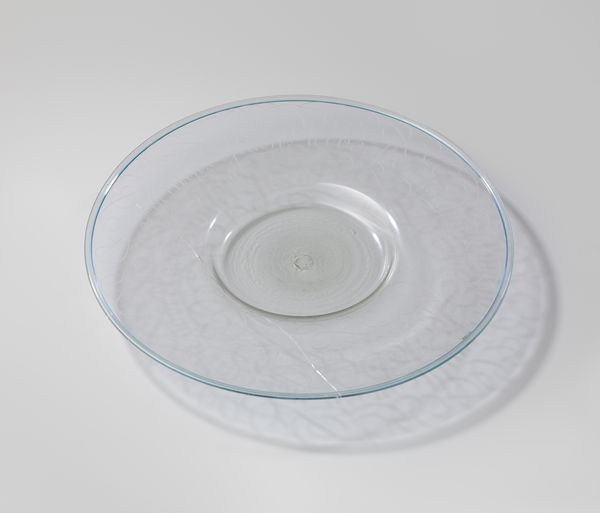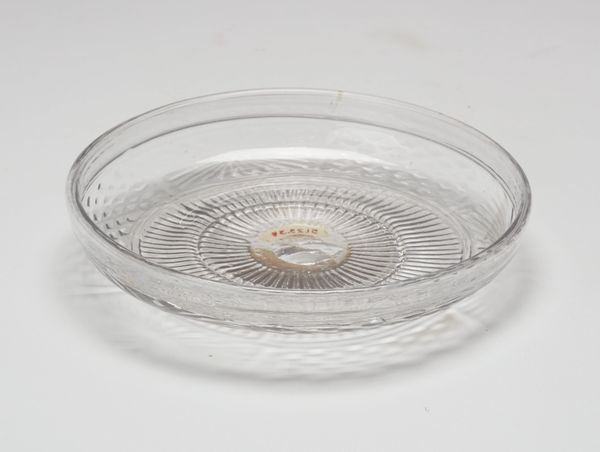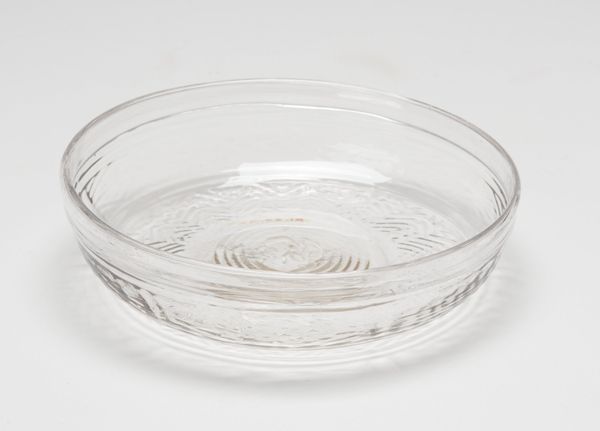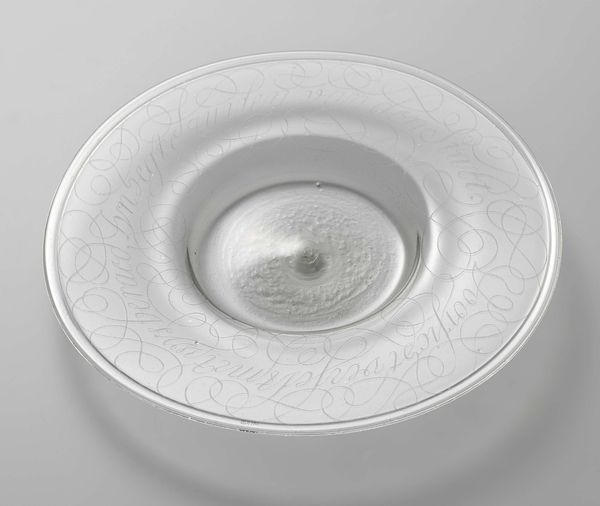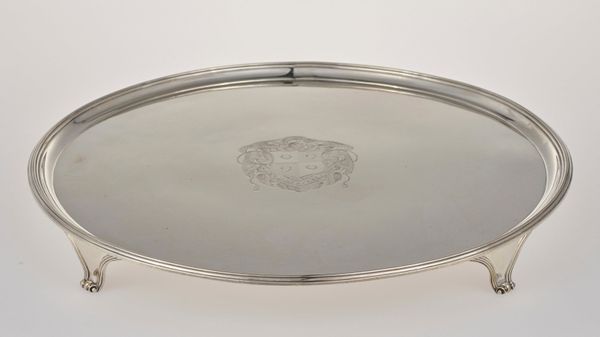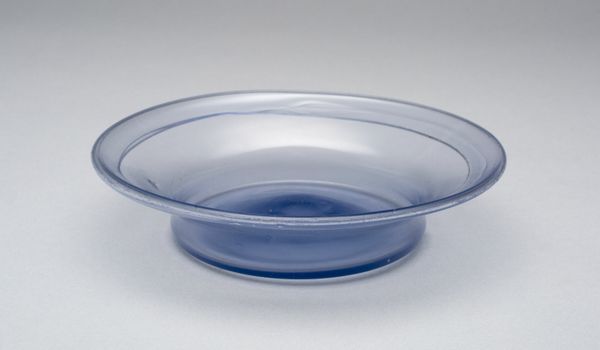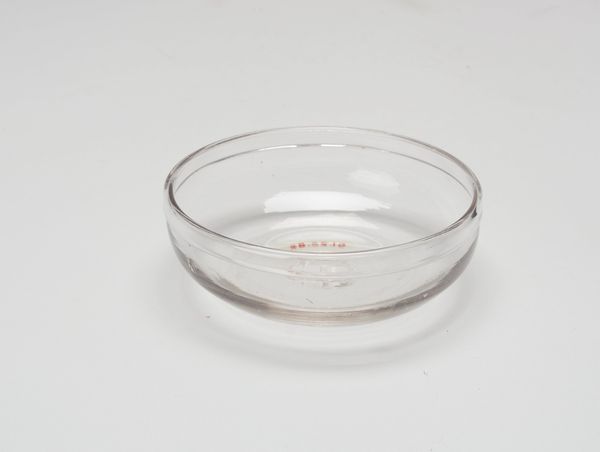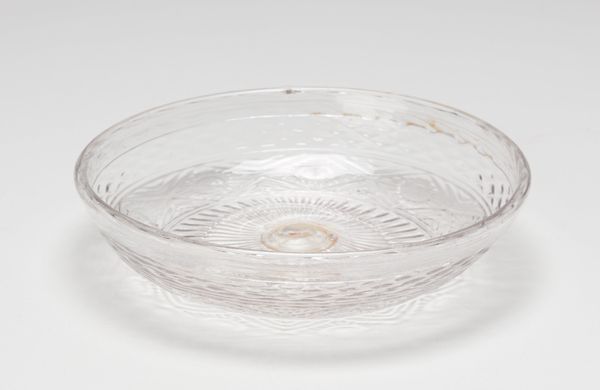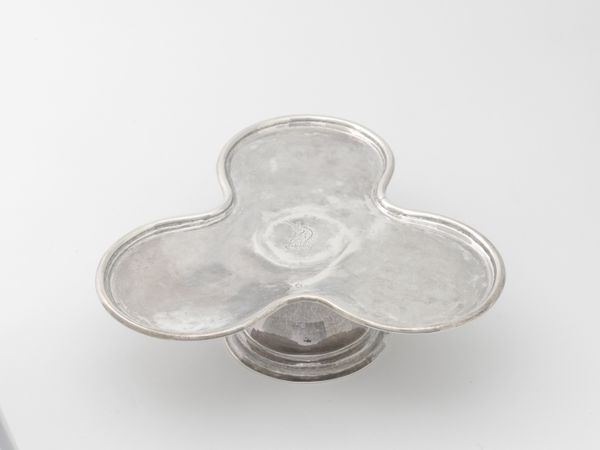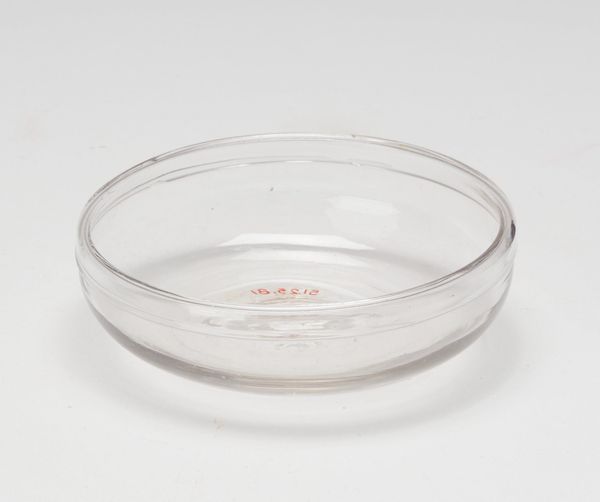
glass
#
venetian-painting
#
glass
#
italian-renaissance
#
italy
Copyright: Public Domain
Curator: Here we have an exquisite example of Venetian glassmaking: an anonymous "Fruit Dish" from the 17th century, held in the collection of the Minneapolis Institute of Art. Editor: My first impression is one of lightness and airiness. The transparent glass gives it an almost ethereal quality, like something that could float away. Curator: Indeed. The skill required to achieve such delicate work is considerable. Venetian glassmakers held a near monopoly on fine glass production at this time, closely guarding their techniques. The furnace technology, the precise recipes for the glass batch, the specialized tools—all of this underpinned their supremacy in the luxury goods market. Editor: That striking turquoise chain design circling the center draws the eye. Blue is often associated with the heavens, or purity. Does the form itself—this raised, open dish—carry any specific connotations, do you think? Perhaps generosity, abundance...? Curator: It's hard to say definitively without knowing the original owner. These objects signified wealth and taste. The consumption of fruit itself could be a performance of affluence, certainly. One might examine how this dish, designed for display, engages in creating hierarchies. Editor: Perhaps the circular motif signifies eternity, or wholeness? Also, the dish begs the question, what kind of fruit was held? Fruits from overseas were prized then, of course, and also the display of seasonal produce. All things evanescent! Curator: That's interesting. These fragile vessels highlight not only skilled craft, but also social stratification. The means to both produce and possess such things. The cultural context surrounding Venetian glass involved restrictive guild practices and intense competition. Editor: So it’s much more than just decorative art, then; these visual languages, symbols, become little historical doorways into a larger cultural story, wouldn't you agree? The blue itself would carry meaning, wouldn’t it, reflecting the skies and seas linking Venice to other ports and markets? Curator: Precisely. Analyzing the "Fruit Dish," one gains insights into production methods, consumption practices, and even global trade routes that sustained Renaissance Italy. Editor: The dialogue we've been able to have today underscores that objects always harbor stories, and by paying attention to both design and history, we unlock ever more insights. Curator: Exactly, examining materiality and meaning together unveils rich cultural narratives embodied within the most seemingly simple things.
Comments
No comments
Be the first to comment and join the conversation on the ultimate creative platform.
